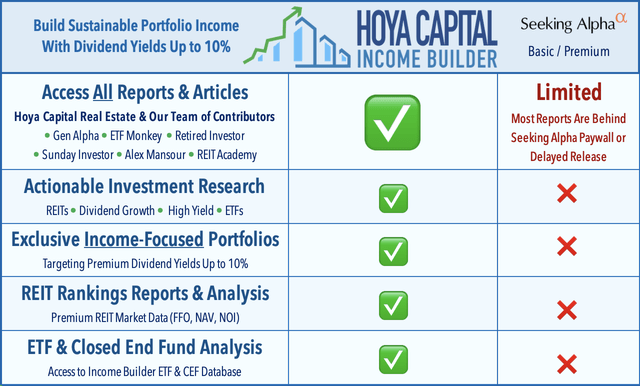
Dzmitry Dzemidovich/iStock via Getty Images
Article Purpose
Welcome to the fourth edition of my monthly dividend and income ETF series, where I summarize key metrics for 76 ETFs across the U.S. dividend, income, and risk management categories. As an introduction for new readers, I started this series to make it easy
The Sunday Investor Joins Income Builder
The Sunday Investor has teamed up with Hoya Capital to launch the premier income-focused investing service on Seeking Alpha. Members receive complete early access to our articles along with exclusive income-focused model portfolios and a comprehensive suite of tools and models to help build sustainable portfolio income targeting premium dividend yields of up to 10%.
Whether your focus is High Yield or Dividend Growth, we’ve got you covered with actionable investment research focusing on real income-producing asset classes that offer potential diversification, monthly income, capital appreciation, and inflation hedging. Start A Free 2-Week Trial Today!

